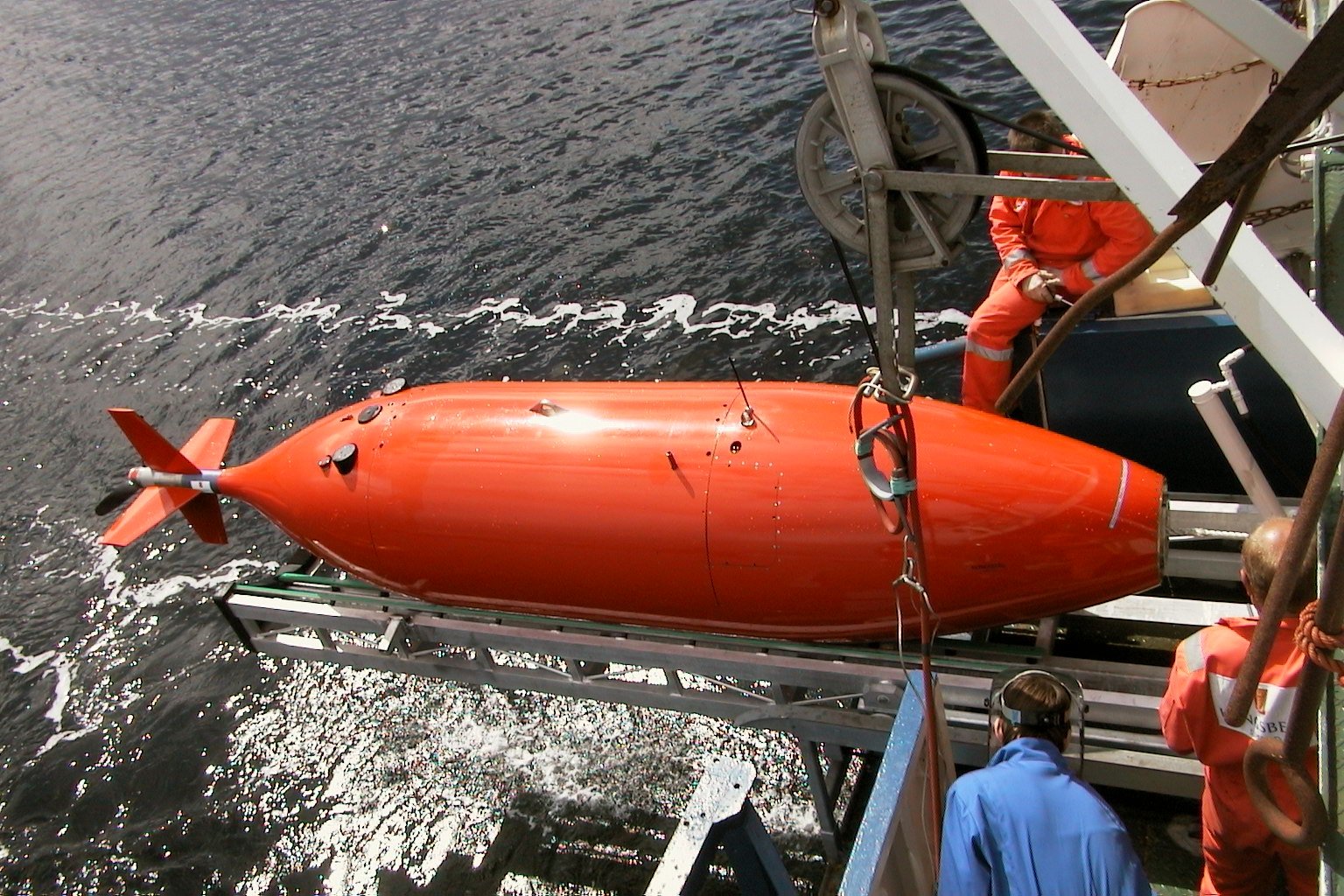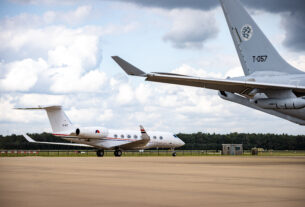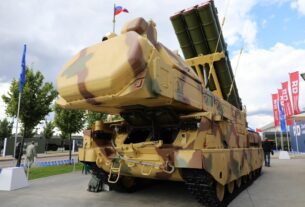Underwater surveillance and AUVs
Technology has been a major driver of evolution of the war tactics around the world. The Ocean remains a treacherous and vast area to monitor, deliver help, or enforce the law. Governments seeking to control maritime borders, minimize illegal trafficking, and protect ocean ecosystems face daunting surveillance challenges. Finding better ways of observing and reporting on the interior of the ocean, its seafloors and coastal boundaries remain principal objectives of the marine community.
These days there is an increasing interest in underwater surveillance systems both for military and non-military applications. There seems to be an increasing fear of non-state actors going underwater to reach their vicious goals. Locations to be protected may be naval bases, sensitive installations connected with offshore oil-and gas production and transport, nuclear power plants etc.
The strategic nature of threats has underscored the importance of technology in expanding naval offensive and defensive capabilities.
Naval warfare relies on a combination of vehicles working together. Submarines hunt under the sea, fast ships screen for incoming threats, and aircraft fly overhead, seeking danger beyond the line of sight.
There is an ever-increasing adoption of new technologies to improve surveillance capabilities and safety of life, and autonomous technology is no exception. Underwater acoustic methods lend themselves well to surveillance of the subsea environment.
The use of robotic machines for assisting in search and rescue (SAR) operations in naval operations has shown tremendous success in the recent past. Autonomous underwater vehicle fall into the mobile robotics sector and are of brilliant importance to the present world military and commercial requirements.
Until relatively recently, AUVs have been used for a limited number of tasks dictated by the technology available. With the development of more advanced processing capabilities and high yield power supplies, AUVs are now being used for more and more tasks with roles and missions constantly evolving.
Force multipliers
Autonomous Underwater Vehicles (AUVs) have a wide range of applications in marine applications, and are increasingly being used in the scientific, military, commercial, and policy sectors. Their ability to operate autonomously of a host vessel makes them well suited to exploration of extreme marine environments.
The AUV, which is very small in size and operates around a mother ship from where it is launched, controlled and recovered, helps the navies in surveying waters and help in the deterrence of hostile ships or submarines.
The first AUV was developed at the Applied Physics Laboratory at the University of Washington as early as 1957 by Stan Murphy, Bob Francois and later on, Terry Ewart. The “Special Purpose Underwater Research Vehicle”, or SPURV, was used to study diffusion, acoustic transmission, and submarine wakes.
Hundreds of different AUVs have been designed over the past 50 or so years,but only a few companies sell vehicles in any significant numbers. There are few companies that sell AUVs on the international market, notably Kongsberg Maritime, Bluefin Robotics, Atlas Elektronik, and OceanScan.
Vehicles range in size from man portable lightweight AUVs to large diameter vehicles of over 10 metres length. Large vehicles have advantages in terms of endurance and sensor payload capacity; smaller vehicles benefit significantly from lower logistics
Kongsberg has got a good product line when it comes to their autonomous underwater vehicles. HUGIN AUVs boast operational experience from commercial and naval operations. Hugin operations have taken place in all parts of the world, in shallow to deep water, in arctic and tropical waters.
MUNIN AUVs are designed to collect high resolution sonar data geo-referenced by a survey grade positioning system. It is an efficient compact vehicle design, providing for easier launch and recovery and the possibility of using smaller launch vessels.
REMUS AUV has been a tremendous success with more than 250 vehicles delivered. Remus vehicles are used in a wide number of applications including navies, hydrography and marine research. Three different models available.
SEAGLIDER AUV has revolutionised the way that oceanographic data is collected. Extremely long endurance allows collection of data at a fraction of the cost of traditional methods. Researchers, naval planners and commercial enterprises around the world are using these vehicles in a wide variety of applications.
The UUVs in contemporary use can be classified into two broad types: autonomous undersea vehicles (AUVs) and remotely operated undersea vehicles (ROVs). Although rapid advances in technology have blurred many distinctions between the two platforms, an AUV differentiates itself from an ROV by maintaining a degree of autonomy from human control. The AUV’s chief attribute is that it can undertake ASW tasks typically carried out by nuclear-powered attack submarines (SSNs), freeing the latter to perform more critical functions. For this, these platforms are equipped with a passive sonar device to enable a constant tracking of submarines.
Autonomous Underwater Vehicles (AUVs) are unmanned, self-propelled vehicles that are typically deployed from a surface vessel, and can operate independently of that vessel for periods of a few h to several days.Remotely Operated Vehicles (ROVs) remain tethered to the host vessel and, while this enables them to draw more power and communicate real-time data, their speed, mobility and spatial range are very limited compared with an AUV. The wholly autonomous nature of some AUVs means that the deploying vessel can be used for other tasks (sometimes geographically separate from the AUV work area) while the AUV is in the water, dramatically increasing the amount of data that can be collected for a given amount of ship-time
AUVs are the alternatives to the remotely operated vehicles (ROVs), which are controlled and powered from the surface but often prove to be inefficient at the places where communication between the operator and robot is constrained
Due to its multi mission capability, scientist are putting more efforts to develop advanced variants of existing AUVs , which can in real sense be a force multiplier for the naval forces.
The US Navy is testing a fish like robot designed to carry out stealthy, silent and secure underwater surveillance missions – from intelligence gathering to hull inspections, where its silent operation and mission endurance would provide great advantages to sailors and marines.
Named as GhostSwimmer, it is developed to resemble the shape and mimic the swimming style of a large fish. At a length of approximately 1.5 meters (5 feet) and a weight of nearly 45kg. (100 pounds), the GhostSwimmer vehicle can operate in water depths ranging from 0.25 to 90 meters (10 inches to 300 feet).
Its bio-mimicry provides additional security during low-visibility intelligence, surveillance and reconnaissance (ISR) missions and friendly hull inspections, while quieter than propeller driven craft of the same size.
GhostSwimmer will allow the Navy to have success on more types of missions, while keeping divers and sailors safe.
A similar project undertaken by Boston Engineering is the ‘BIOSwimmer’, a six-foot-long robotic fish designed to detect contraband hidden on a ship’s hull. For this mission the ‘fish’ was equipped with a sophisticated sensor suite. The robotic fish during its test was used to detect packages of mock contraband of varying sizes placed by testers in hard-to-reach spaces on the battleship’s hull.
Meeting future needs
India’s emergence as a strategic player in Asia has drawn attention to its Navy’s role as a security provider in the Indian Ocean. With growing maritime reach, and an admirable record of service in the Indian Ocean Region (IOR), the Indian Navy is widely seen as an important security player in the Asian region.
Leading navies today use high-tech submersibles for mine countermeasure (MCM) operations, naval intelligence, surveillance, and reconnaissance (ISR) roles, and anti-submarine warfare (ASW) missions. Even though UUV technology is still in relative infancy, the use of UUVs is growing rapidly.
For the past few years, the Defence Research and Development Organisation (DRDO) has been designing and developing multiple AUVs to meet broader operational requirements for futuristic scenarios. In April 2016, DRDO scientists successfully developed an autonomous underwater prototype for multiple maritime missions in India’s waters.
The DRDO’s prototype is a four-metre long, 1.4-metre wide, flat fish-shaped vehicle which can travel at a speed of about seven km per hour at depths of up to 300 metres below sea level. Fully pre-programmed in terms of algorithms and mission requirements, the robotic vehicle is piloted by an on-board computer.
Meanwhile, NSTL’s ambitious program, ‘Autonomous Sea Vehicle’ (ASV), on the lines of the US Navy’s ‘Manta Unmanned Underwater Vehicle’ program is making gradual progress. The Indian ASV will be a ‘submadrones’-a submarine launched swimming spy plane, contained within an underwater drone with folded wings housed in a torpedo canister.
The drone is designed to be launched from submarine tubes and deploy in reconnaissance mode for a fixed time period. On completion of the task, it is programmed to drop into the water, to be then recovered by a small autonomous vehicle and returned to the submarine. For deep-sea exploration, India has the ‘Samudra’, a ‘low cost’ AUV that operates underwater with pre-programmed inputs. Fitted with an on-board image processing unit, it can undertake ‘path detection, obstacle avoidance and target identification’ under the sea.
The more important implication of AUV operations is the shift in anti-submarine warfare operations from defensive to offensive missions.The development of unmanned and autonomous underwater vehicles is likely to depend on the future effectiveness of various platforms in carrying out conventional submarine missions.




